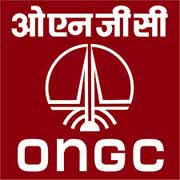-
Government’s coal reforms begin to pay off, reduce power costs
Coal sector reforms initiated by the Narendra Modi government are beginning to pay. Initiatives to improve coal quality and efficiency in the supply chain have brought down the cost of power from coal-fired plants in spite of revisions in coal prices, central cess and railway freight in the last three years.
Decline in the cost of power has accrued mainly from power stations burning less coal to generate each unit of electricity on assured quality of domestic fuel.
There is also import substitution worth Rs 23,349 crore, which saves fuel costs.
Since cost of coal makes up 54%-60% of the price charged by power producers and is passed on to consumers, coal consumption has a bearing on tariffs and environmental dividend in terms of emissions.
According to government data, power stations are now burning 8% less coal than they used to three years ago for each unit of electricity. State-run NTPCBSE -2.40 %, which accounts for 17% of all generation capacity in the country and is the key supplier to states, reduced its coal consumption by 5.5% in 2016-17.
NTPC’s coal cost stood at Rs 2 per unit in 2014-15 and should have risen by 33 paise due to revisions in coal price, government cess and railway freight. Remarkably though, it stood at Rs 1.94 per unit for 2016-17. In other words, even after paying 33 paise more since 2014-15, NTPC’s power costs 6 paise less today.
For discoms then, this actually means a saving of 39 paise per unit, taking into account the impact of the revisions, and translates into hundreds of crores of rupees.
Lower cost of power ultimately benefits consumers by way of lower tariff. That happens only in an ideal situation. In reality, discoms coping with sagging bottomlines and commercial losses may not be able to reduce monthly bills of consumers immediately. But they will find it hard to justify demand for tariff hike to state regulators. In the long run, however, cheaper power will result in lower traiffs once the discom reforms take root. J.T. Compher Jersey
Share This



























































































